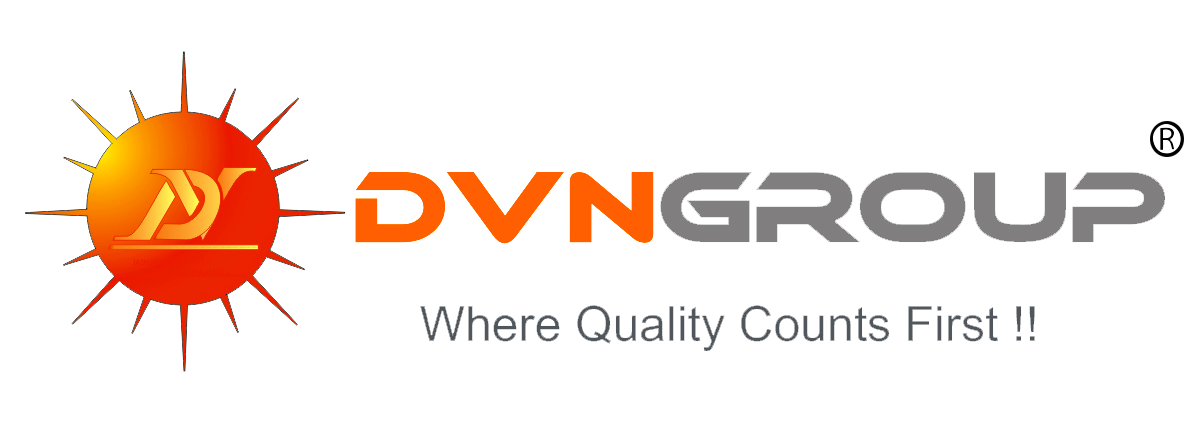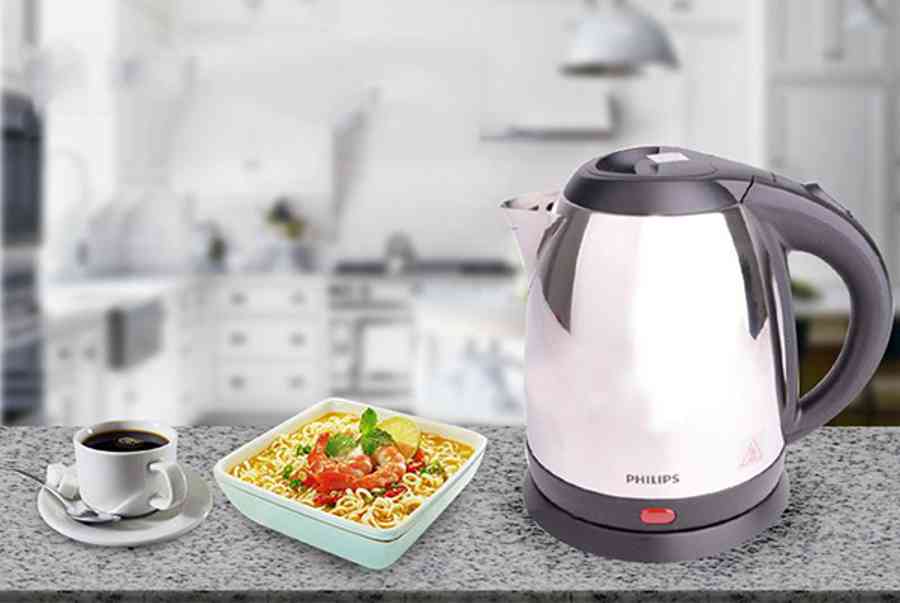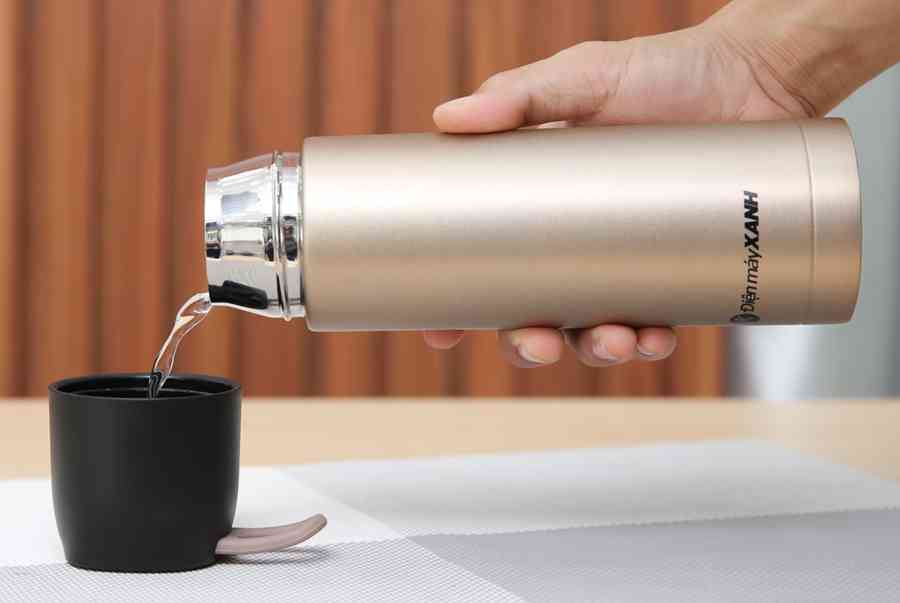| Example |
Name |
Notes
|
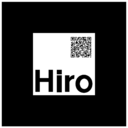 |
AR Code |
A type of marker used for placing content inside augmented reality applications. Some AR Codes can contain QR codes inside, so that AR content can be linked to.[39] See also ARTag.
|
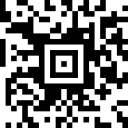
|
Aztec Code |
Designed by Andrew Longacre at Welch Allyn (now Honeywell Scanning and Mobility). Public domain. – International Standard: ISO/IEC 24778
|

|
bCode
|
A barcode designed for the study of insect behavior.[40] Encodes an 11 bit identifier and 16 bits of read error detection and error correction information. Predominately used for marking honey bees, but can also be applied to other animals.
|
|
|
BEEtag
|
A 25 bit (5×5) code matrix of black and white pixels that is unique to each tag surrounded by a white pixel border and a black pixel border. The 25-bit matrix consists of a 15-bit identity code, and a 10-bit error check.[41] It is designed to be a low-cost, image-based tracking system for the study of animal behavior and locomotion.
|
|
|
BeeTagg
|
A 2D barcode with honeycomb structures suitable for mobile tagging and was developed by the Swiss company connvision AG.
|
|
|
Bokode
|
A type of data tag which holds much more information than a barcode over the same area. They were developed by a team led by Ramesh Raskar at the MIT Media Lab. The bokode pattern is a tiled series of Data Matrix codes.
|

|
Boxing
|
A high-capacity 2D barcode is used on piqlFilm by Piql AS[42]
|
|
Code 1 |
Public domain. Code 1 is currently used in the health care industry for medicine labels and the recycling industry to encode container content for sorting.[43]
|

|
Code 16K
|
The Code 16K (1988) is a multi-row bar code developed by Ted Williams at Laserlight Systems (USA) in 1992. In the US and France, the code is used in the electronics industry to identify chips and printed circuit boards. Medical applications in the USA are well known. Williams also developed Code 128, and the structure of 16K is based on Code 128. Not coincidentally, 128 squared happened to equal 16,000 or 16K for short. Code 16K resolved an inherent problem with Code 49. Code 49’s structure requires a large amount of memory for encoding and decoding tables and algorithms. 16K is a stacked symbology.[44][45]
|
|
ColorCode |
ColorZip[46] developed colour barcodes that can be read by camera phones from TV screens; mainly used in Korea.[47]
|
|
Color Construct Code |
Color Construct Code is one of the few barcode symbologies designed to take advantage of multiple colors.[48][49]
|
 |
Cronto Visual Cryptogram
|
The Cronto Visual Cryptogram (also called photoTAN) is a specialized color barcode, spun out from research at the University of Cambridge by Igor Drokov, Steven Murdoch, and Elena Punskaya.[50] It is used for transaction signing in e-banking; the barcode contains encrypted transaction data which is then used as a challenge to compute a transaction authentication number using a security token.[51]
|
|
CyberCode |
From Sony.
|
|
d-touch |
readable when printed on deformable gloves and stretched and distorted[52][53]
|
|
DataGlyphs |
From Palo Alto Research Center (also termed Xerox PARC).[54]
Patented.[55]
DataGlyphs can be embedded into a half-tone image or background shading pattern in a way that is almost perceptually invisible, similar to steganography.[56][57]
|
 |
Data Matrix |
From Microscan Systems, formerly RVSI Acuity CiMatrix/Siemens. Public domain. Increasingly used throughout the United States. Single segment Data Matrix is also termed Semacode. – International Standard: ISO/IEC 16022.
|
|
Datastrip Code |
From Datastrip, Inc.
|
|
|
Digimarc Barcode
|
The Digimarc Barcode is a unique identifier, or code, based on imperceptible patterns that can be applied to marketing materials, including packaging, displays, ads in magazines, circulars, radio and television[58]
|
|
digital paper |
patterned paper used in conjunction with a digital pen to create handwritten digital documents. The printed dot pattern uniquely identifies the position coordinates on the paper.
|
 |
DotCode |
Standardized as AIM Dotcode Rev 3.0. Public domain. Used to track individual cigarette and pharmaceutical packages.
|
|
Dot Code A |
Also known as Philips Dot Code.[59] Patented in 1988.[60]
|
|
|
DWCode
|
Introduced by GS1 US and GS1 Germany, the DWCode is a unique, imperceptible data carrier that is repeated across the entire graphics design of a package[61]
|
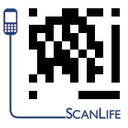 |
EZcode |
Designed for decoding by cameraphones;[62] from ScanLife.[63]
|
|
HueCode |
From Robot Design Associates. Uses greyscale or colour.[64]
|
|
InterCode |
From Iconlab, Inc. The standard 2D barcode in South Korea. All 3 South Korean mobile carriers put the scanner program of this code into their handsets to access mobile internet, as a default embedded program.
|
|

|
JAB Code
|
Just Another Bar Code is a colored 2D barcode. Square or rectangle. License free
|
|
|
mCode
|
Designed by NextCode Corporation, specifically to work with mobile phones and mobile services.[65] It is implementing an independent error detection technique preventing false decoding, it uses a variable-size error correction polynomial, which depends on the exact size of the code.[66]
|
|
MMCC |
Designed to disseminate high capacity mobile phone content via existing colour print and electronic media, without the need for network connectivity
|
 |
NexCode |
NexCode is developed and patented by S5 Systems.
|
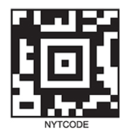 |
Qode |
American proprietary and patented 2D barcode from NeoMedia Technologies, Inc.[63]
|
 |
QR code |
Initially developed, patented and owned by Denso Wave for automotive components management; they have chosen not to exercise their patent rights. Can encode Latin and Japanese Kanji and Kana characters, music, images, URLs, emails. De facto standard for Japanese cell phones. Used with BlackBerry Messenger to pick up contacts rather than using a PIN code. The most frequently used type of code to scan with smartphones, and one of the most widely used 2D barcodes.[67] Public Domain. – International Standard: ISO/IEC 18004
|
|
Screencode |
Developed and patented[68][69] by Hewlett-Packard Labs. A time-varying 2D pattern using to encode data via brightness fluctuations in an image, for the purpose of high bandwidth data transfer from computer displays to smartphones via smartphone camera input. Inventors Timothy Kindberg and John Collomosse, publicly disclosed at ACM HotMobile 2008.[70]
|
 |
ShotCode |
Circular barcodes for camera phones. Originally from High Energy Magic Ltd in name Spotcode. Before that most likely termed TRIPCode.
|
|
Snapcode, also called Boo-R code |
used by Snapchat, Spectacles, etc. US9111164B1[71][72][73]
|
|
|
Snowflake Code
|
A proprietary code developed by Electronic Automation Ltd. in 1981. It is possible to encode more than 100 numeric digits in a space of only 5mm x 5mm. User selectable error correction allows up to 40% of the code to be destroyed and still remain readable. The code is used in the pharmaceutical industry and has an advantage that it can be applied to products and materials in a wide variety of ways, including printed labels, ink-jet printing, laser-etching, indenting or hole punching.[44][74][75]
|
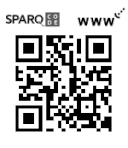 |
SPARQCode |
QR code encoding standard from MSKYNET, Inc.
|
|
|
Trillcode
|
Designed for mobile phone scanning.[76] Developed by Lark Computer, a Romanian company.[66]
|
|
VOICEYE |
Developed and patented by VOICEYE, Inc. in South Korea, it aims to allow blind and visually impaired people to access printed information. It also claims to be the 2D barcode that has the world’s largest storage capacity.
|















